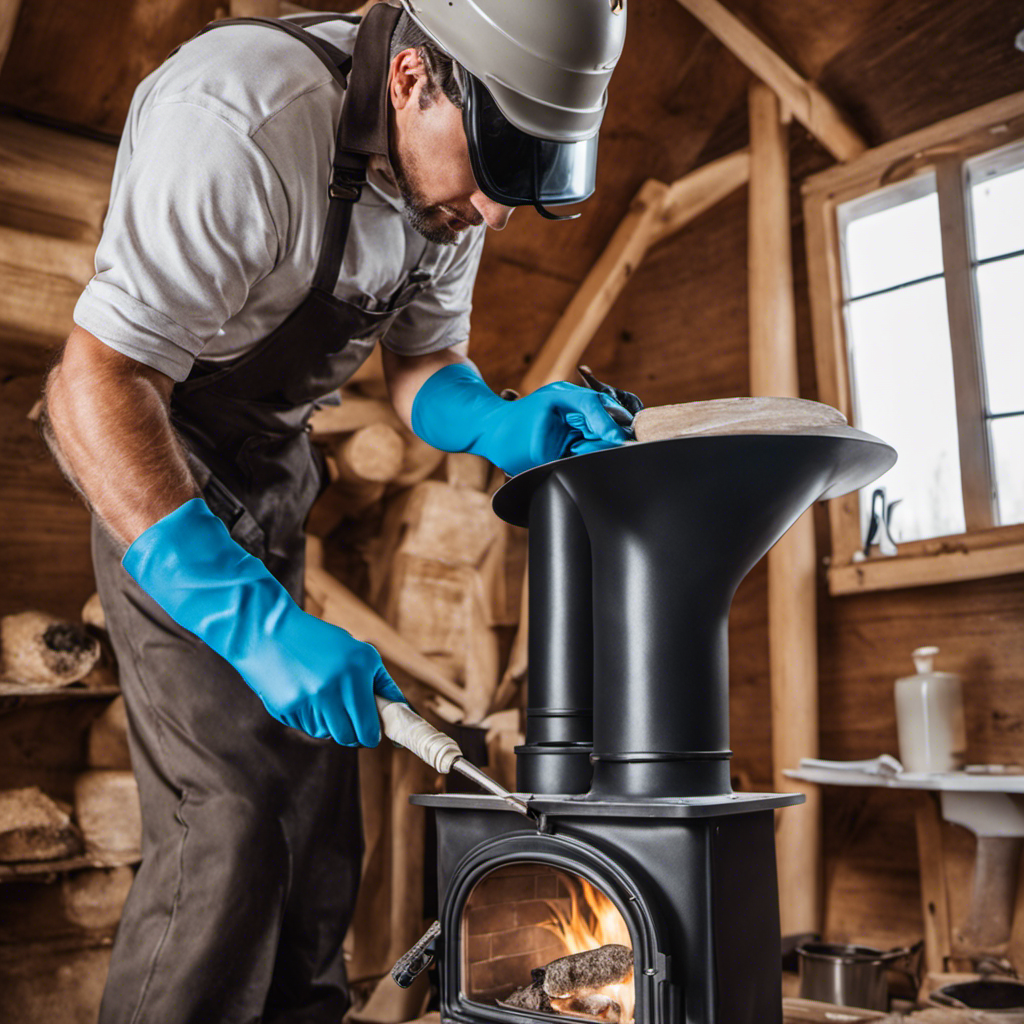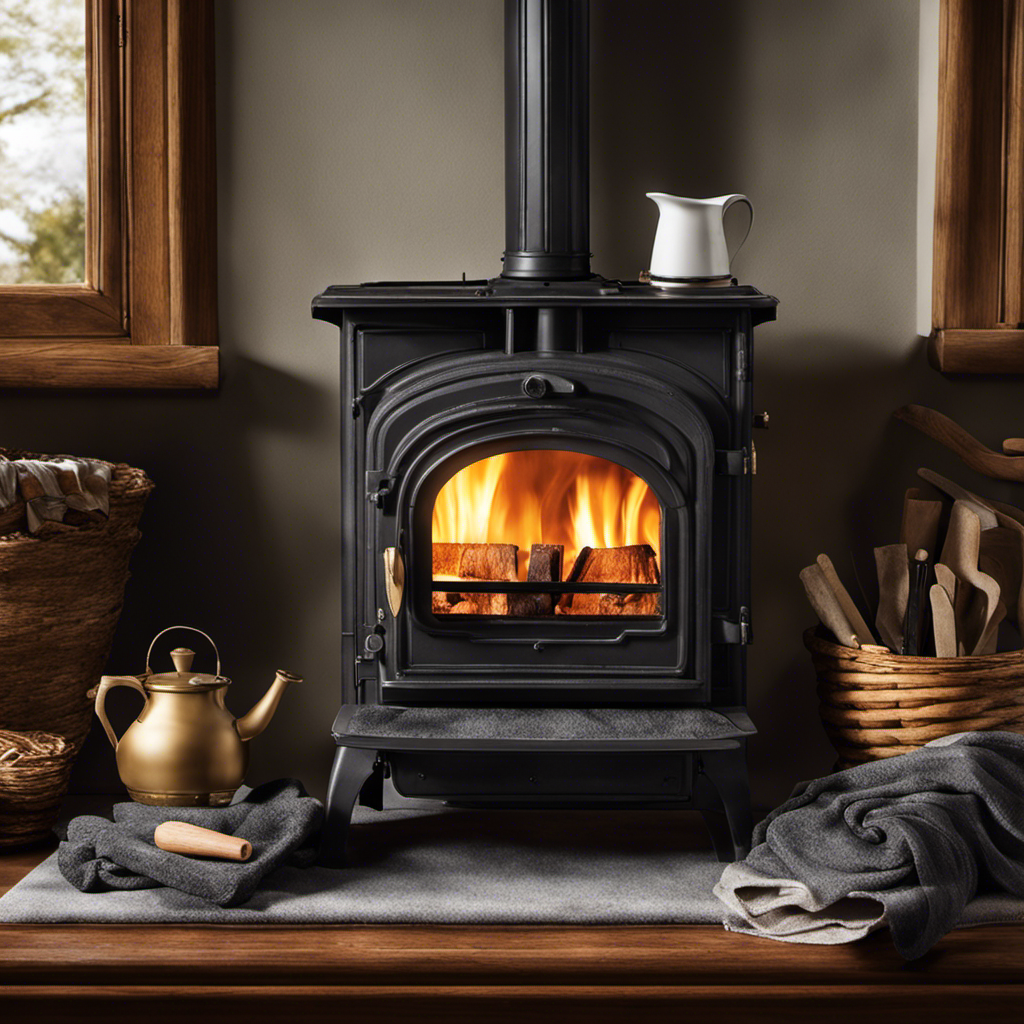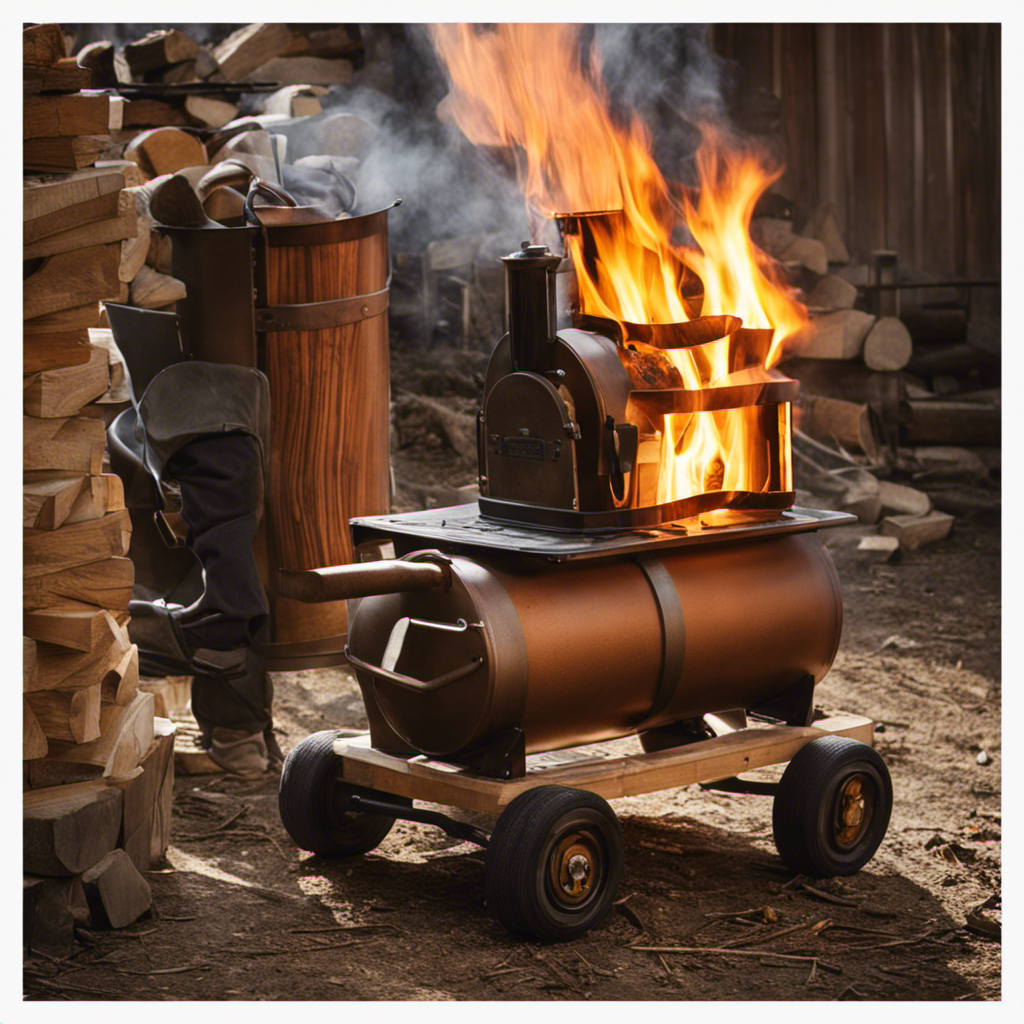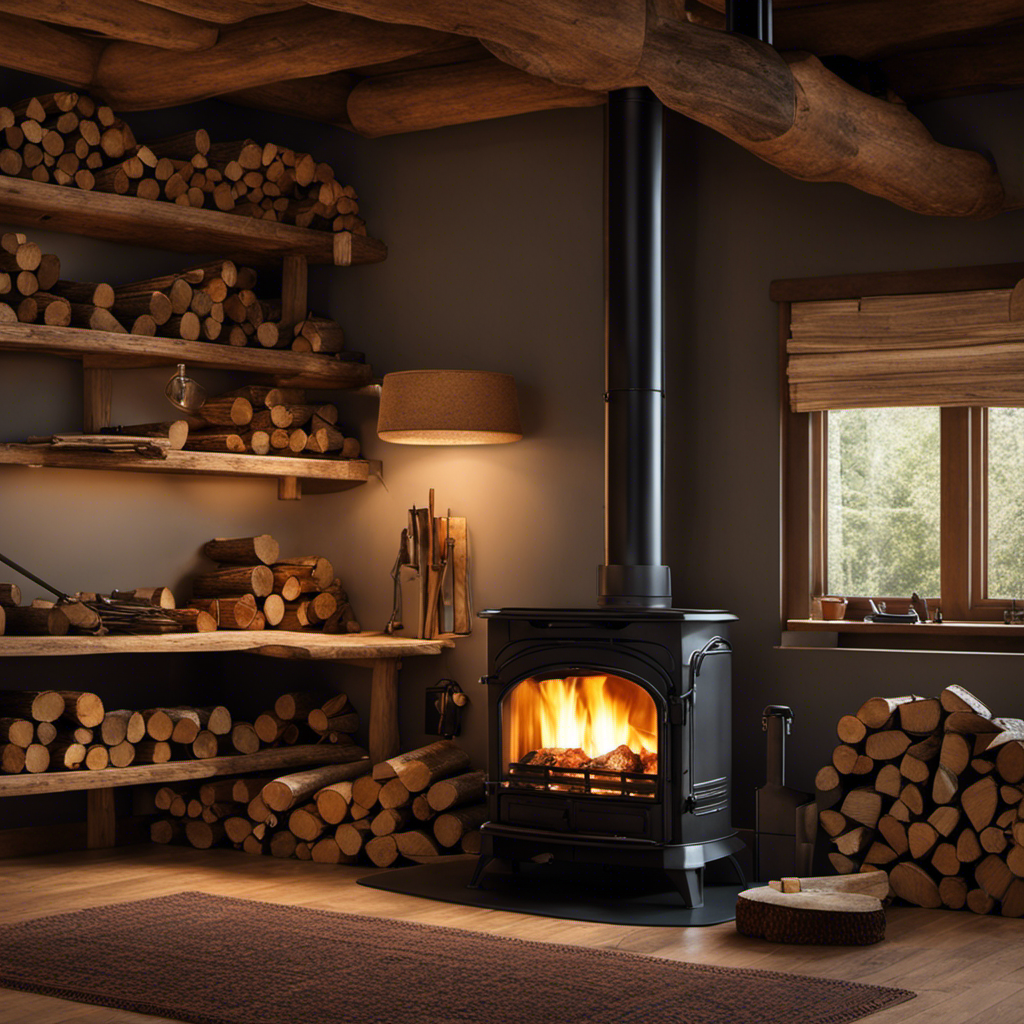Hello, everyone! It seems you’ve acquired a wood stove and now wish to seal its pipe, am I right? I want to emphasize how vital it is to ensure the pipe is sealed correctly to maintain the stove’s effectiveness and to guarantee your safety.
Lucky for you, I’ve got all the know-how you need to get the job done right. In this article, I’m going to walk you through the step-by-step process of sealing your wood stove pipe like a pro.
So, let’s dive in and make sure your wood stove is running smoothly and safely!
Key Takeaways
- Sealing wood stove pipe is important for preventing harmful gases from entering the living space.
- Proper sealing improves stove efficiency and reduces fuel consumption.
- Incorrect sealing increases the risk of fire.
- Regular maintenance and inspection of the seal are crucial for ensuring safety and efficiency.
Importance of Sealing Wood Stove Pipe
I can’t overemphasize the importance of sealing the wood stove pipe properly. When it comes to installing a wood stove, ensuring a tight seal on the pipe has numerous advantages.
Firstly, a well-sealed pipe prevents any potential leaks, which can lead to harmful gases such as carbon monoxide entering the living space. This is crucial for the safety and well-being of everyone in the home.
Additionally, a properly sealed wood stove pipe improves the overall efficiency of the stove, allowing it to generate more heat with less fuel consumption.
On the other hand, the main disadvantage of not sealing the pipe correctly is the risk of fire. Gaps or leaks in the pipe can cause sparks or embers to escape, potentially igniting nearby combustible materials.
Therefore, taking the time and effort to seal the wood stove pipe properly is essential for both safety and efficiency purposes.
Tools and Materials Needed for Sealing
To ensure a proper seal on the stove pipe, I’ll need some high-temperature silicone caulk and a caulking gun. Here are the tools and materials needed for sealing:
-
High-temperature silicone caulk: This type of caulk is specifically designed to withstand the intense heat produced by wood stoves. It ensures a durable and long-lasting seal.
-
Caulking gun: A caulking gun allows for precise application of the silicone caulk. It makes the sealing process easier and more efficient.
-
Utility knife: A utility knife is useful for preparing the stove pipe by removing any old caulking or debris. It ensures a clean surface for the new seal.
-
Wire brush: A wire brush can be used to clean the stove pipe before applying the caulk. It helps to remove rust, dirt, and other impurities that can affect the seal.
Sealing techniques and common sealing mistakes will be discussed in the subsequent section about preparing the stove pipe for sealing.
Preparing the Stove Pipe for Sealing
Before applying the caulk, it’s important to clean the surface of the stove pipe to ensure a proper seal. Common sealing issues can arise if the surface isn’t properly cleaned and prepped.
To troubleshoot these issues, start by inspecting the stove pipe for any debris, rust, or old caulk. Use a wire brush or sandpaper to remove any loose particles or rust from the surface. Wipe the area clean with a damp cloth to remove any remaining dust or residue.
It’s crucial to ensure that the surface is dry before applying the caulk.
Step-by-Step Guide to Sealing the Wood Stove Pipe
After cleaning the surface of the stove pipe, I can begin applying the caulk to ensure a proper seal. This step is crucial in preventing any leaks or drafts that can affect the efficiency of the wood stove.
Here is a step-by-step guide to sealing the wood stove pipe:
-
Choose the right caulk: Opt for a high-temperature silicone caulk specifically designed for sealing stove pipes.
-
Apply the caulk: Use a caulk gun to apply a continuous bead of caulk around the joint between the stove pipe and the stove collar. Make sure to fill any gaps or cracks.
-
Smooth the caulk: Use a caulk smoothing tool or your finger to smooth out the caulk and ensure a tight seal.
-
Let it cure: Allow the caulk to cure according to the manufacturer’s instructions before using the wood stove.
Common sealing problems include caulk cracking or peeling over time. If you’re looking for alternative sealing methods, consider using high-temperature tape or stove pipe gaskets. These options can provide a reliable and long-lasting seal for your wood stove pipe.
Maintenance Tips for a Long-lasting Seal
Maintaining a long-lasting seal is essential for ensuring the efficiency and effectiveness of my wood stove. To prevent leaks, there are a few tips that I’ve learned over the years.
Firstly, it’s crucial to regularly inspect the seal and look for any signs of wear or damage. If there are any gaps or cracks, they should be sealed immediately using high-temperature silicone or stove cement.
Secondly, I make sure to clean the seal regularly to remove any debris or buildup that could compromise its effectiveness.
Lastly, one common mistake to avoid is over-tightening the connections, as this can cause the seal to become distorted and ineffective.
Frequently Asked Questions
How Often Should I Seal My Wood Stove Pipe?
Inspecting my wood stove pipe for leaks is important, but how often should I do it? And what’s the proper way to prepare the pipe before sealing it? Let me share my knowledge and give you precise, thorough answers.
Can I Use Regular Duct Tape to Seal My Wood Stove Pipe?
Regular duct tape is not recommended for sealing wood stove pipes. There are specific sealing methods that are more effective and safe, such as using high-temperature silicone or metal tape designed for stove pipes. These alternatives ensure a proper seal and prevent potential hazards.
Is It Necessary to Seal Both the Interior and Exterior of the Wood Stove Pipe?
Sealing both the interior and exterior of the wood stove pipe is necessary. It ensures that no smoke or gases escape and that the pipe remains insulated. Neglecting either side of the pipe could lead to potential hazards.
What Should I Do if I Notice a Leak After Sealing the Wood Stove Pipe?
If I notice a leak after sealing the wood stove pipe, I would troubleshoot the issue by checking for any gaps or loose connections. If I can’t fix it myself, I would seek professional help.
Can I Use High-Temperature Silicone Sealant for Sealing the Wood Stove Pipe?
Yes, high-temperature silicone sealant is commonly used for sealing wood stove pipes. However, it’s important to follow best practices such as cleaning and preparing the surfaces properly to ensure a secure and effective seal.
Conclusion
Sealing your wood stove pipe is crucial for ensuring optimal performance and safety. By following the step-by-step guide, you can effectively seal the pipe using simple tools and materials.
Remember to regularly maintain the seal to prolong its lifespan. With proper sealing, you can enjoy a long-lasting and efficient wood stove system.
So, seize the opportunity to secure your stove pipe for a safe and seamless wood burning experience.
Logan’s affair with adventure began in childhood. He hailed from a small town where vast forests bordered one side and endless shores stretched on the other. His days were spent exploring uncharted woods, climbing tall trees, or listening to the tales of old sailors. This early immersion in a world brimming with stories and mysteries became the foundation of his passion for writing.











